Moving Giant Trees
Preserving and moving 14 giant Live Oaks at the UT Austin Dell Medical Campus was no easy feat, but well worth the effort
 Sasaki
Sasaki
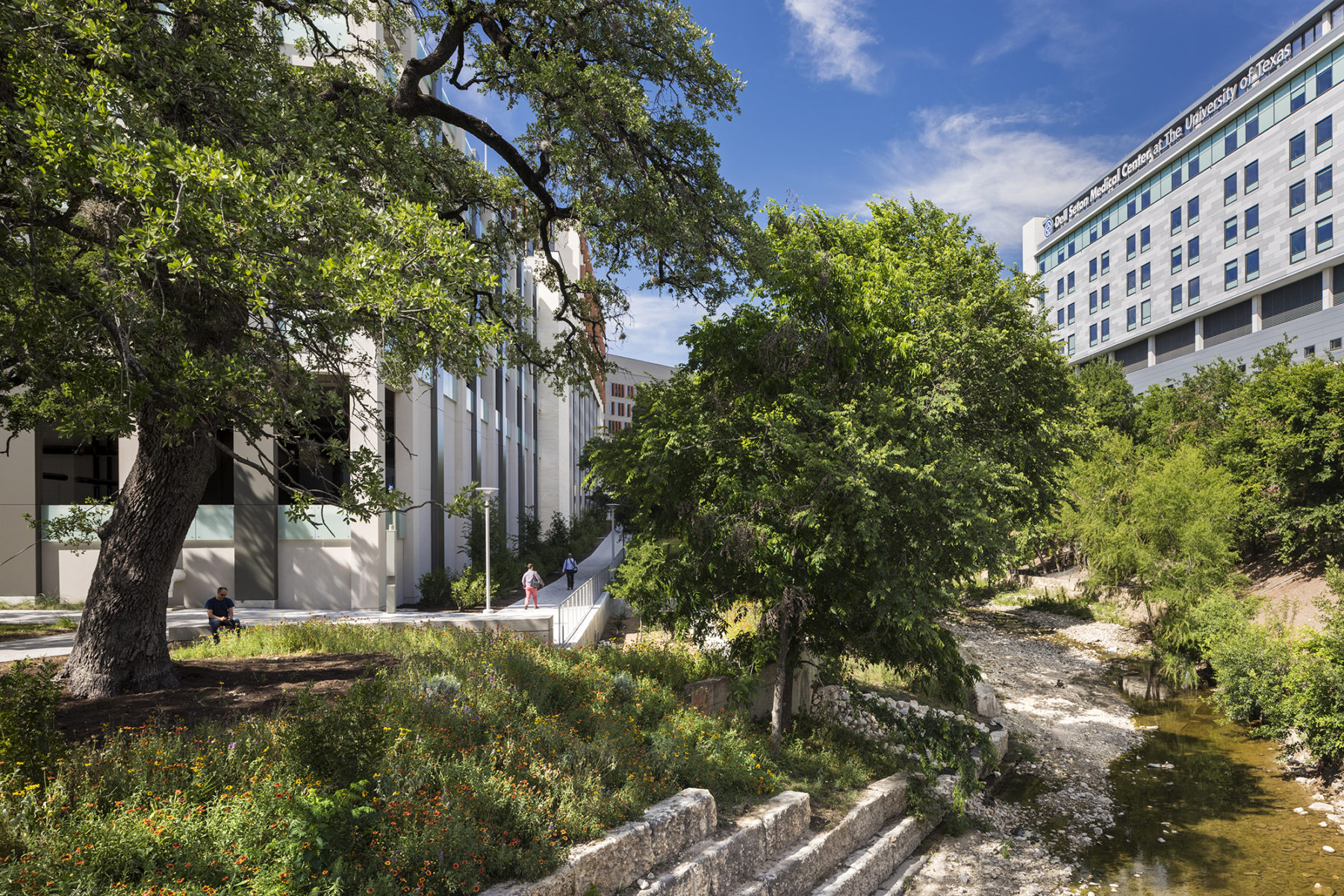
The restored Waller Creek cuts through campus
The Dell Medical School and its teaching hospital, Dell Seton Medical Center, are part of a vibrant health district that is one of Austin’s largest development projects. The 16.2-acre development is located in central Austin on the University of Texas campus—serving the faculty, staff, students and visitors of the Dell Medical School and setting a new image and ecological performance standard for the UT Austin landscape.
The design process for the Dell Medical District landscape was a seamless extension of two previous years of planning by Sasaki and the consultant team. The team had already developed the 2012 Campus Master Plan, the 2013 Medical District Master Plan, and the 2014 UT Austin Campus Landscape Master Plan and Design Guidelines. The development of the Dell Medical District landscape plan employed the same broad-based, inclusive process that characterized the preceding master plans, furthering established collaborations with those responsible for the development and maintenance of the campus landscape.
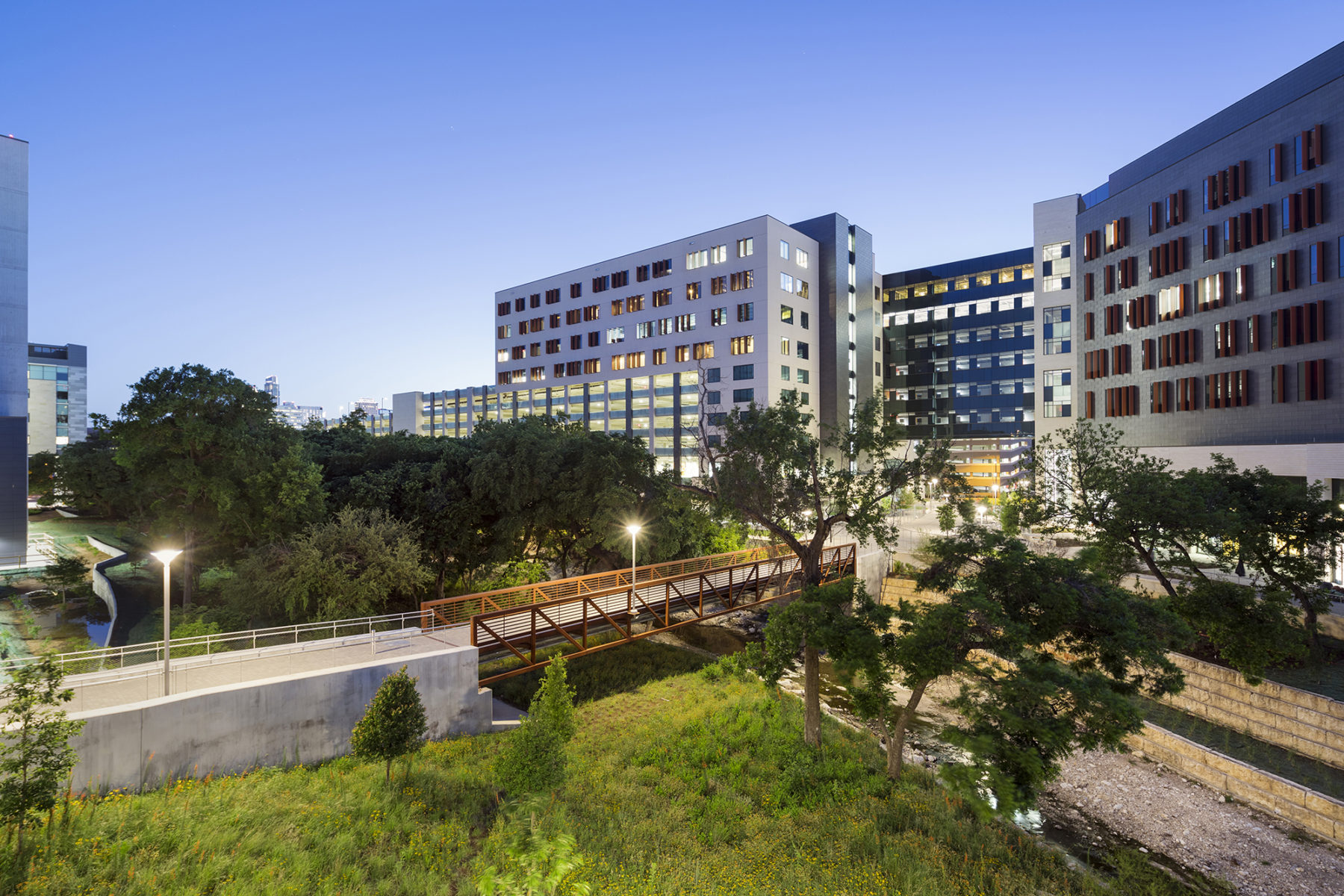
UT Austin Dell Medical Campus at night
The 2012-2014 University master plans established a framework for campus growth and improvement unique in the campus’s history in scope and depth. The successful implementation of the Health Campus realized the master plan’s comprehensive vision for a coherent district of health-related uses, the reclamation of the Waller Creek corridor, and the strengthening of connections to the City of Austin.
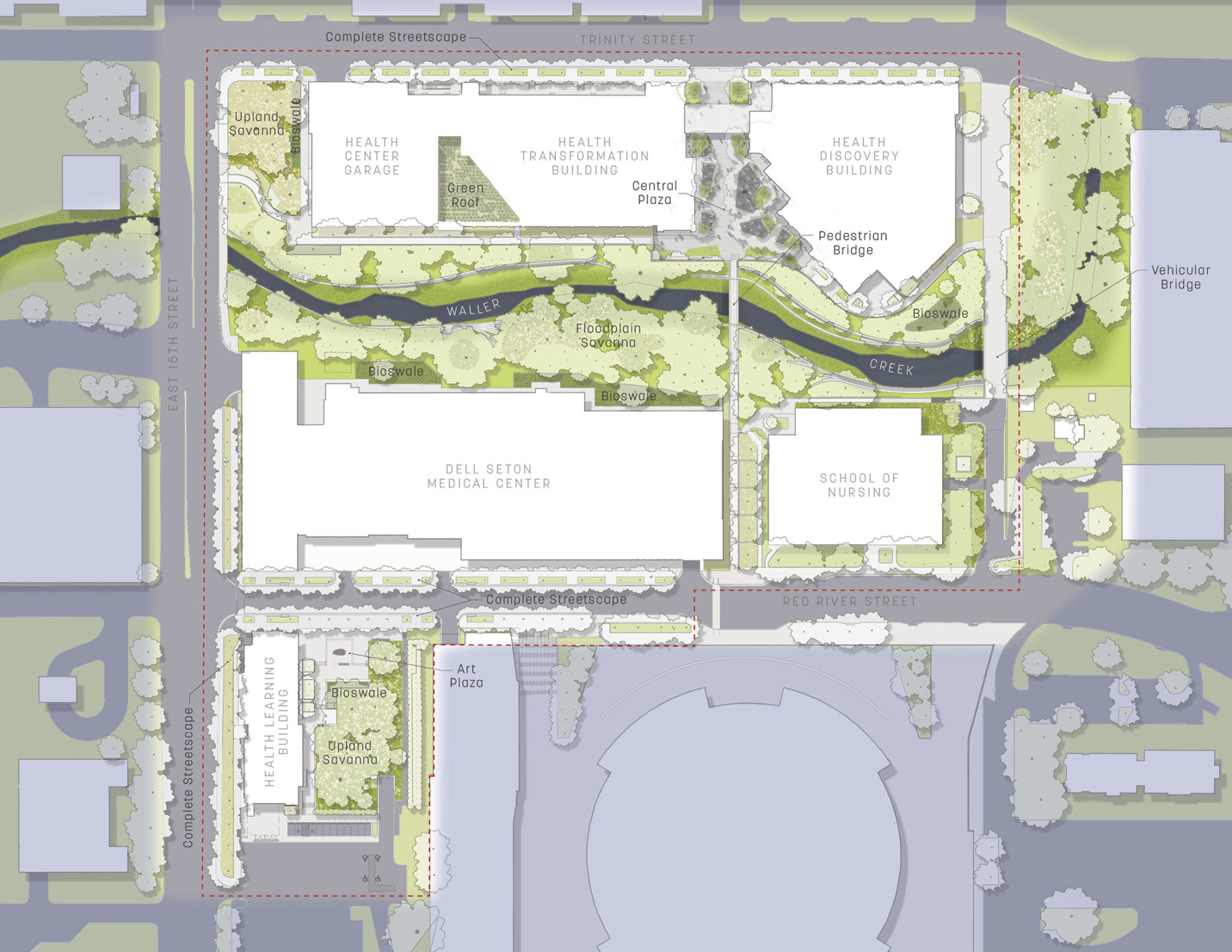
The key organizing elements of the Phase 1 Medical District plan are the existing street grid and the Waller Creek corridor
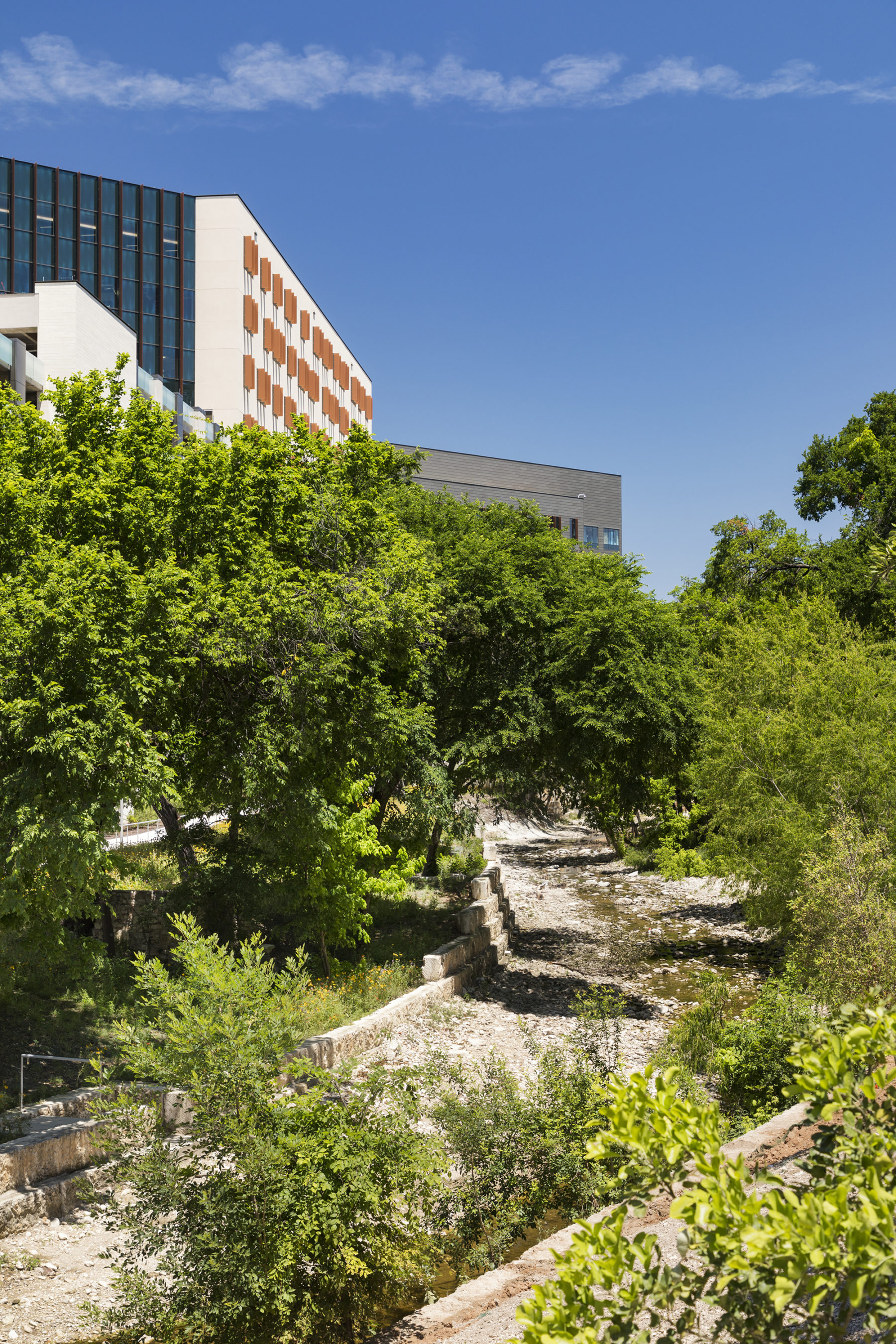
Prior to development, the Waller Creek corridor was a forgotten and unexploited natural asset. The corridor was overgrown with invasive vegetation which was removed to encourage a native riparian savanna plant community.
Once neglected, Waller Creek is now celebrated as a campus asset and important connective open space. Reclaiming the medical district segment of the creek is a first step towards reintegration of this important visual and functional landscape feature into the larger campus.
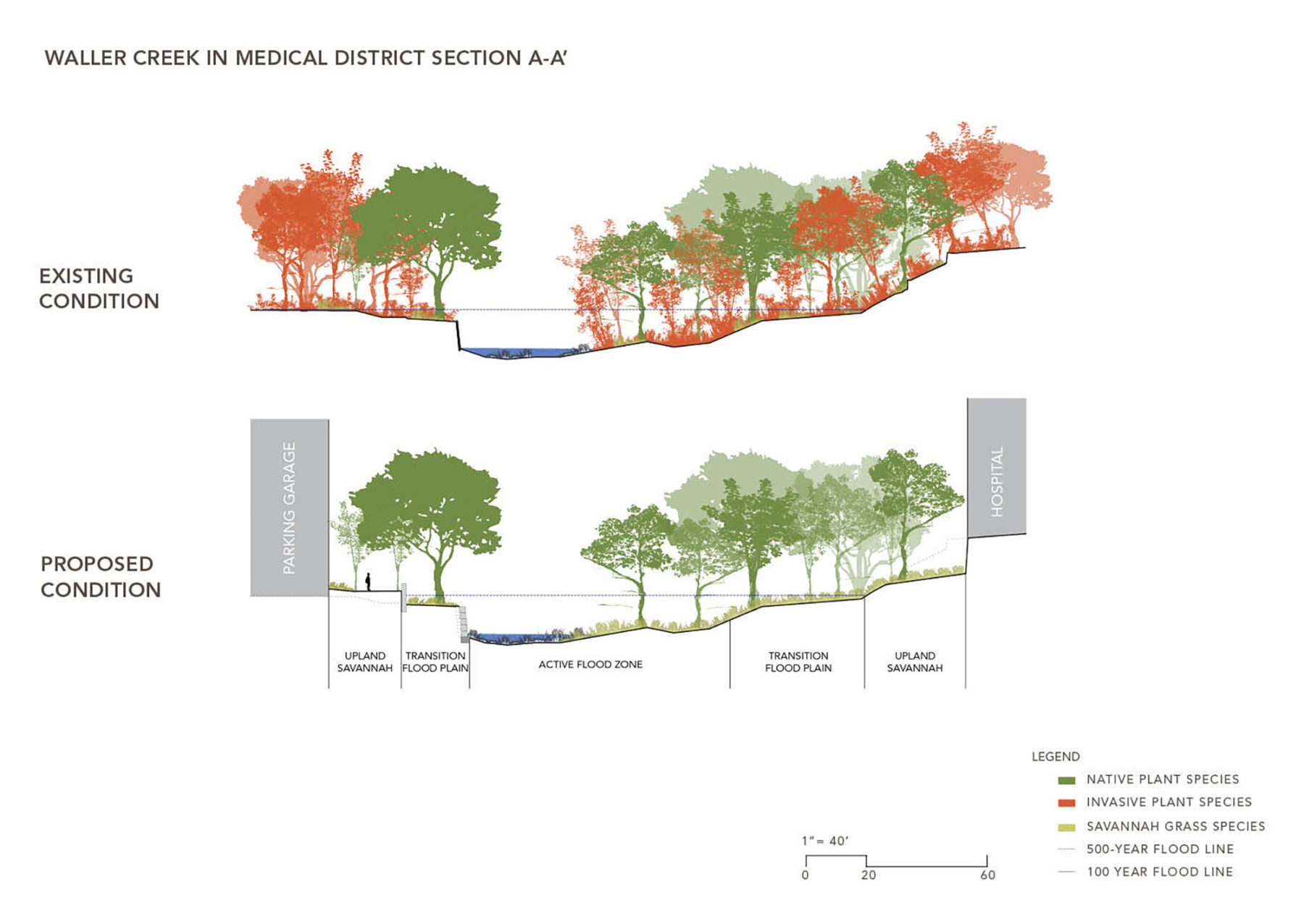
The project transforms the Waller Creek corridor from a neglected backwater to an attractive, health promoting landscape. Streetscapes and plaza areas encourage social engagement and connect the campus to its surrounding urban environment.
Restoration of Waller Creek was an 18-month long process that included establishing a reference plant community at a nearby Nature Conservancy preserve, the removal of invasive species, stream bank stabilization and the re-vegetation of diverse native riparian and upland communities. The work involved the creation of rain gardens and the remediation of soils for significant areas. Once established, most areas of the campus landscape will not require irrigation.
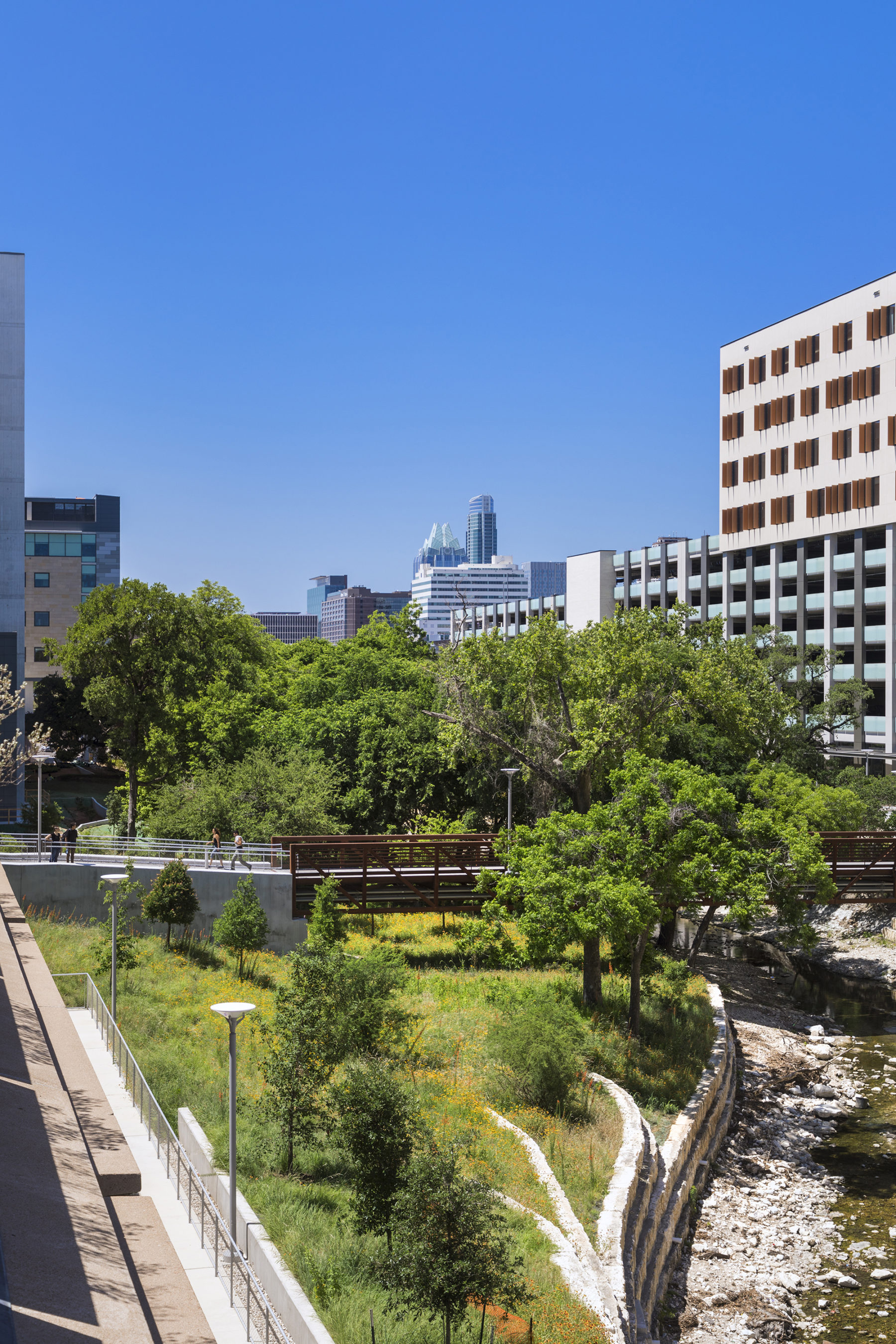
The revitalized creek brings a new image and ecological performance standard for the UT Austin landscape
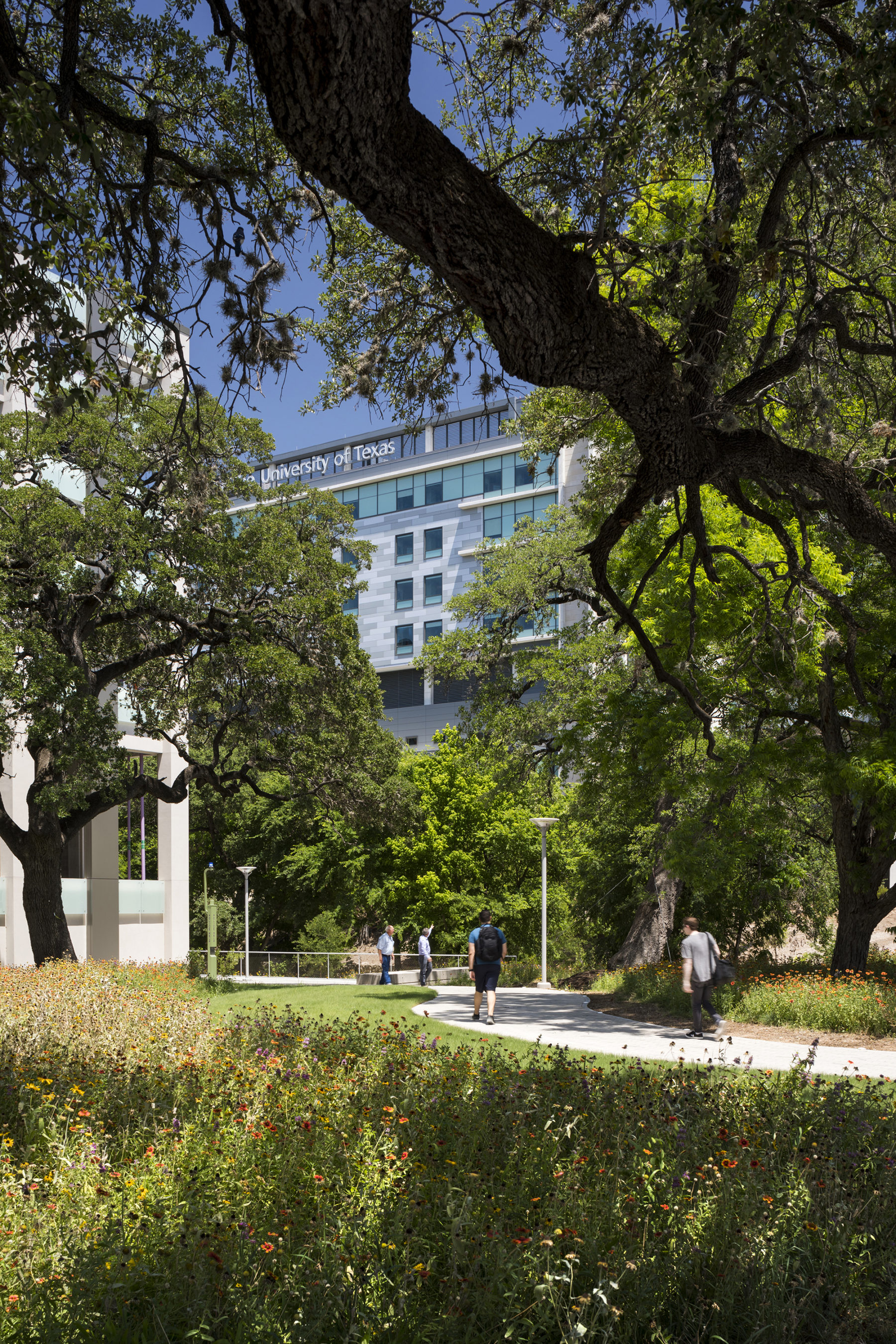
The restored Waller Creek landscape corridor winds through the center of the new Health Campus. A large new outdoor gathering space and pedestrian bridge connect the community to the natural environment.
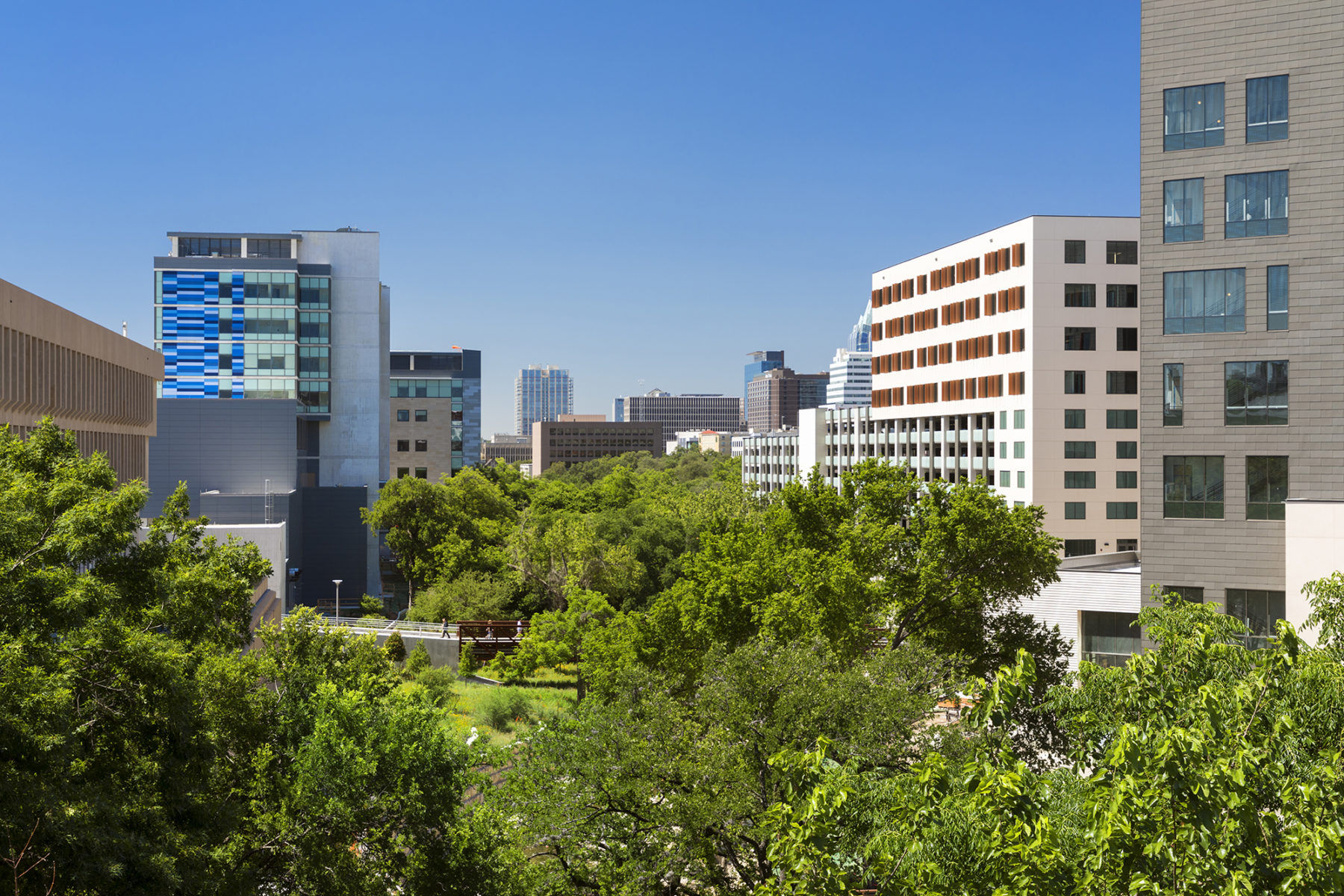
The medical campus is situated in the larger urban context of Austin
The revitalized creek brings a new image and ecological performance standard for the UT Austin landscape
The restored Waller Creek landscape corridor winds through the center of the new Health Campus. A large new outdoor gathering space and pedestrian bridge connect the community to the natural environment.
The medical campus is situated in the larger urban context of Austin
Streetscapes and plaza areas encourage social engagement and connect the campus to its surrounding urban environment. The Medical District landscape plan is designed to enhance ecosystem services and to be a model for a resilient and affordable-to-maintain landscape. Stormwater management features were designed as site amenities to connect visitors to the local climate and hydrology—through a combination of rain gardens, pervious pavers, rainwater harvesting, and a green roof.
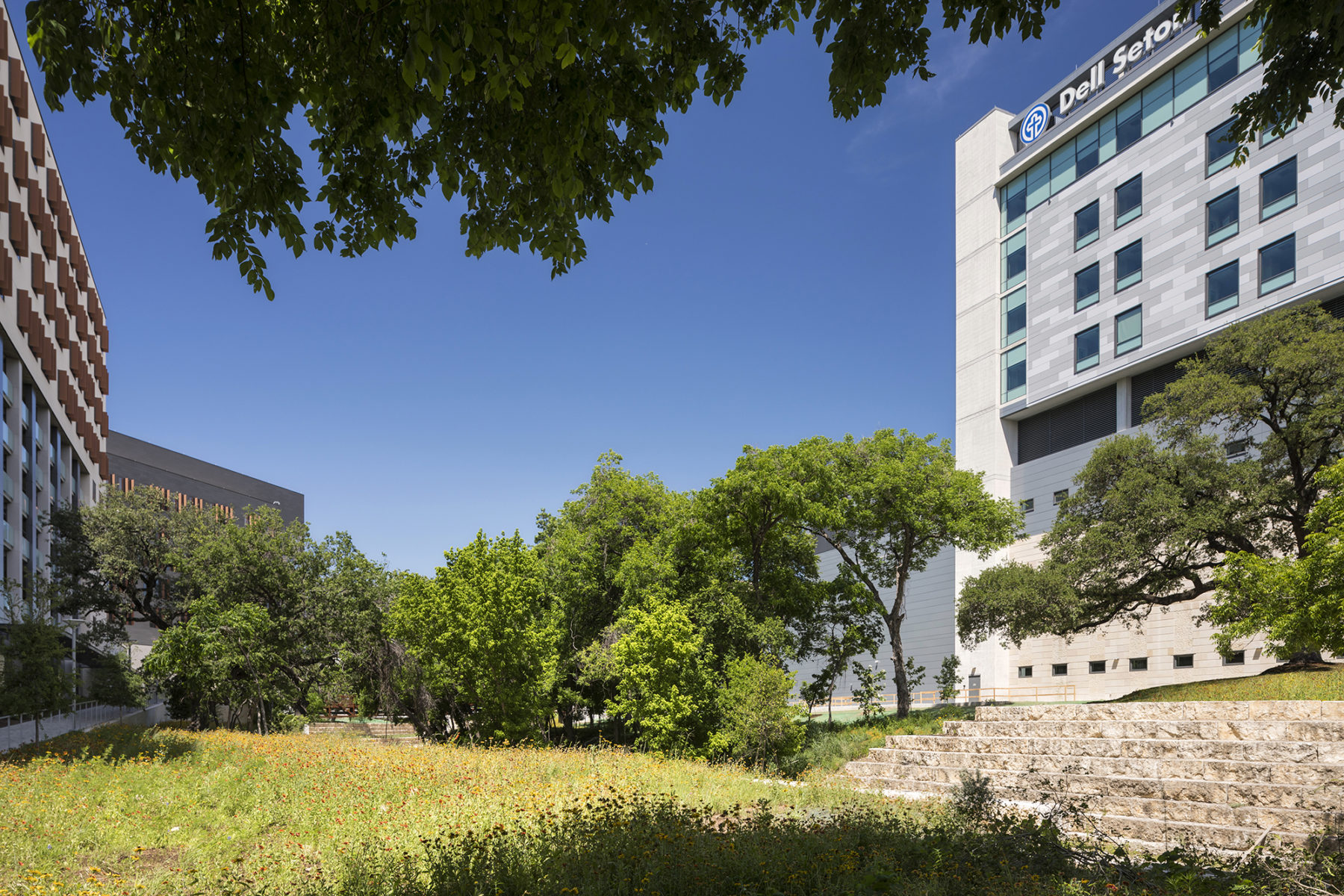
The Medical District landscape plan is designed to enhance ecosystem services and to be a model for a resilient and affordable-to-maintain landscape
The University’s commitment to the health and well-being of the campus community drove the project to undertake the relocation of 14 mature Live Oak trees. Live Oaks are emblematic features of the historic Beaux Arts main campus, beloved for their beauty and the many ecosystem benefits they provide, including welcome shade in the Austin climate. The transplanted Oaks extend the best aspects of the historic campus to the new Health Campus district. The majestic trees confer instant grace on developed areas, offsetting the presence of large heath care facilities.
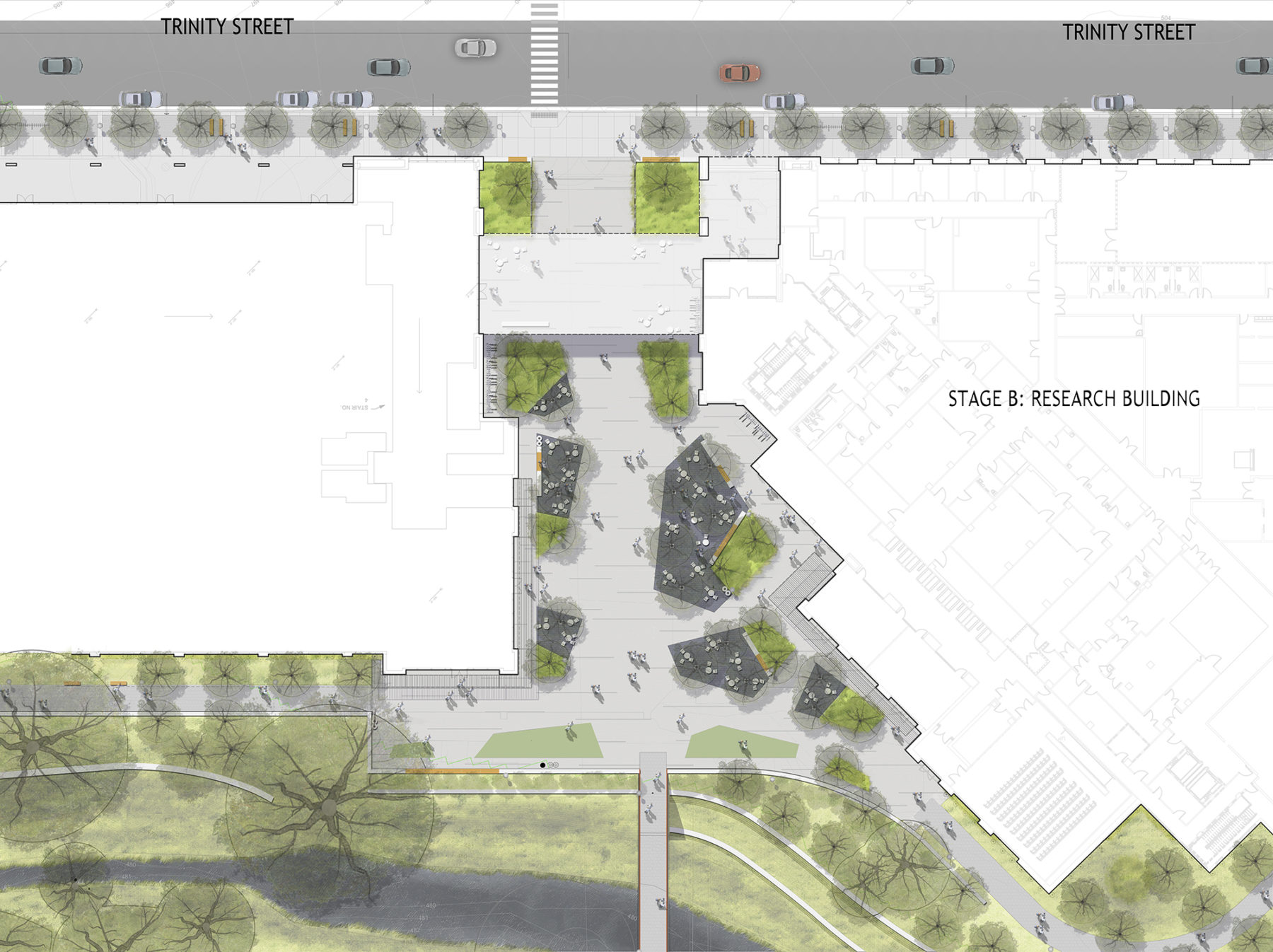
Two plaza spaces serve as social gathering spaces. One plaza is located between the clinical and research facilities and connects Trinity street to Red River Street.
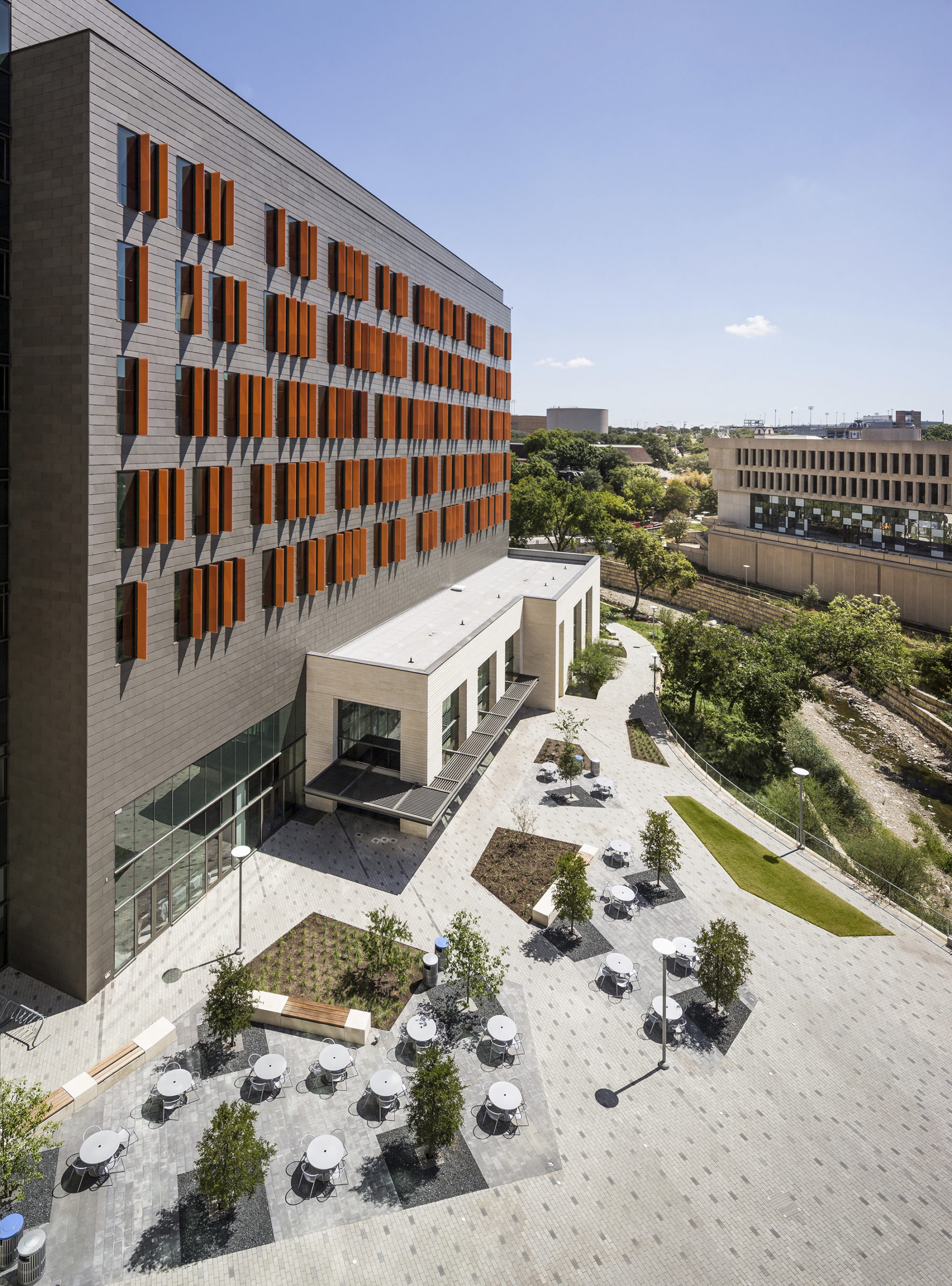
Sitting areas at the 17th Street Plaza will be shaded by native canopy trees. The trees are planted in soil below the plaza level. The plaza paving is supported by a deck support system.
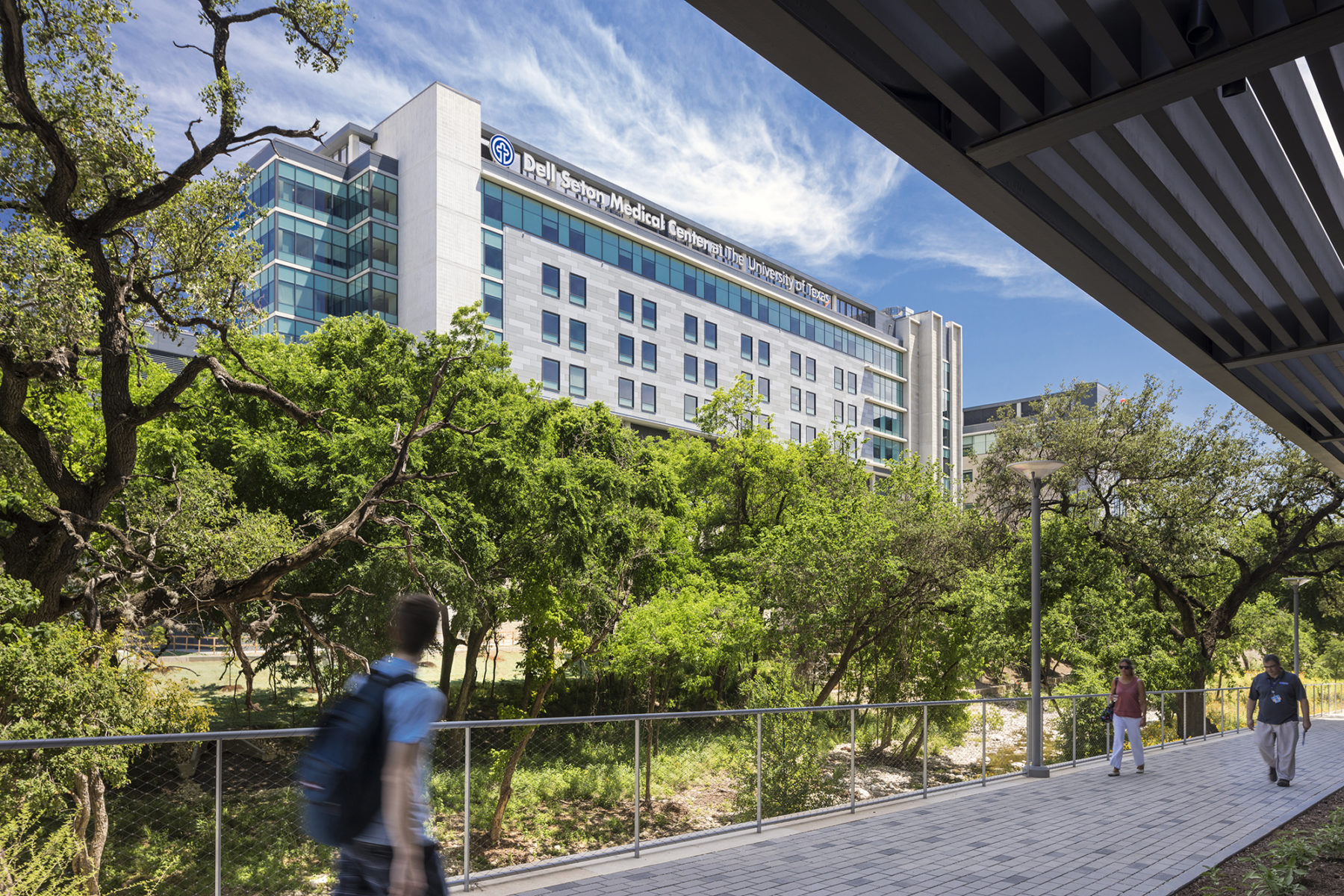
The creek corridor now serves as a central open space between the Dell Seton Hospital and adjacent research, education and clinical facilities
The Dell Medical District landscape sets a new standard for sustainable site development on the UT Austin campus, achieving SITES Gold Certification. The reduction of water consumption, improved stormwater quality, reduced soil erosion, increased habitat value, and enhanced landscape resilience are tangible benefits of the new landscape. The overall design vision is expressed in the new open, inviting, and people-centered campus, connected to its environment and community. On the new campus, people and the environment work together as a functioning system, focused on improving health.
For more information contact Joe Hibbard.